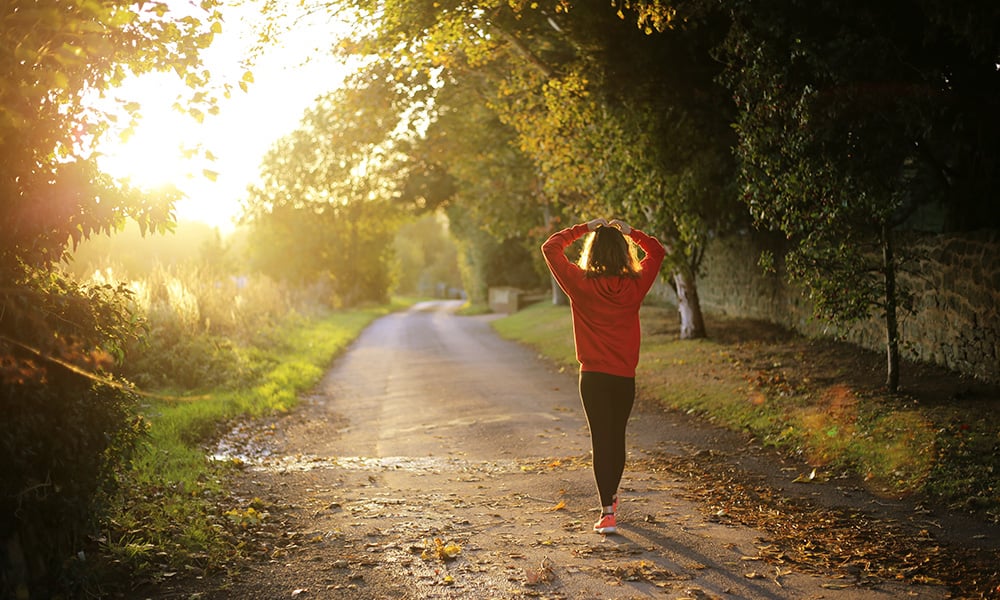
Photo by Emma Simpson on Unsplash
Walking, like breathing, is so ordinary we take it for granted. Yet, it offers so much. Learning to appreciate walking can give us a new lease on life. We slow down, enjoy the moment and scenery, improve our health, take stock of our lives, and even increase our creativity. What’s not to like?
In this series of articles we will be exploring walking and all the reasons walking is so aweome. We’ll be looking at the benefits of walking regularly, walking technique and posture, how to walk mindfully, and we’ll be challenging you to walk more, including taking on a long distance trail.
Walking can be much more than just about getting from A to B. For many people, it’s a way of life. It can become a way to come back to what really matters.
The oldest form of exercise?
Our human ancestors, scientists say, began walking on two legs somewhere between three to six million years ago. Some theorize this happened because standing meant they could see further afield, allowing them to detect potential threats and food sources. Another study suggests bipedalism evolved because it’s more energy efficient than walking on all fours. Walking on two legs also freed our hands to use tools.
Whatever the reasons, humans have been walking for a very long time. We walked out of Africa, across Europe, Central Asia, into North America and down south. As a species, we are almost coded to explore and conquer new territory on foot. It’s what we do.

Photo by Aaron Burden on Unsplash
The best antidote
Walking is an excellent antidote to the busyness and constant connectivity of modern life. In our attention economy, where multiple devices and channels compete for our attention, knowing how to slow down and focus is an increasingly important skill.
Walking is the perfect way to cultivate this skill. It can be the time of the day we take to consciously slow down and pay attention. Rather than having our attention scattered, walking gathers it into a more singular focus. We all need to switch off. We all need to slow down. Walking for the sake of walking is a great way to do this.
The benefits of walking regularly
According to the Better Health Channel, Harvard Medical School, and others the benefits of walking include:
- Increased cardiovascular and pulmonary (heart and lung) fitness
- Reduced risk of heart disease and stroke
- Improved management of conditions such as hypertension (high blood pressure), high cholesterol, joint and muscular pain or stiffness, and diabetes
- Stronger bones and improved balance
- Increased muscle strength and endurance
- Reduced body fat
- It counteracts the effects of weight-promoting genes
- It helps tame a sweet tooth
- It reduces the risk of developing breast cancer
- It eases joint pain
- It boosts immune function.
Building the walking habit
Building a habit takes time and consistency. It’s best to start by making the habit easily doable. To begin with, choose a distance to walk each day that you know you can manage.
Forget about the 10,000 steps hype – a study found that number came from a marketing campaign rather than scientific research – and instead choose a distance, time or step count that is achievable and encourages you to move.
Maybe walking 30 minutes a day works or taking 5000 steps is more realistic for you. You don’t need to do it all at once; you can break it down into chunks, for example walking 15 minutes bites. Once you’ve decided, adjust your activity goals accordingly in your Suunto 3.
Remember, every little bit counts, so look for opportunities to take extra steps. Stand up, and pace while your are on the phone, for example, or choose stairs instead of taking an escalator or elevator, have micro exercise breaks throughout your working day, and try having walking meetings. There are many opportunities to walk more – use your imagination!
In the next article we’ll discuss walking technique – stay tuned!
Lead image: Photo by Fabien Bazanegue on Unsplash
